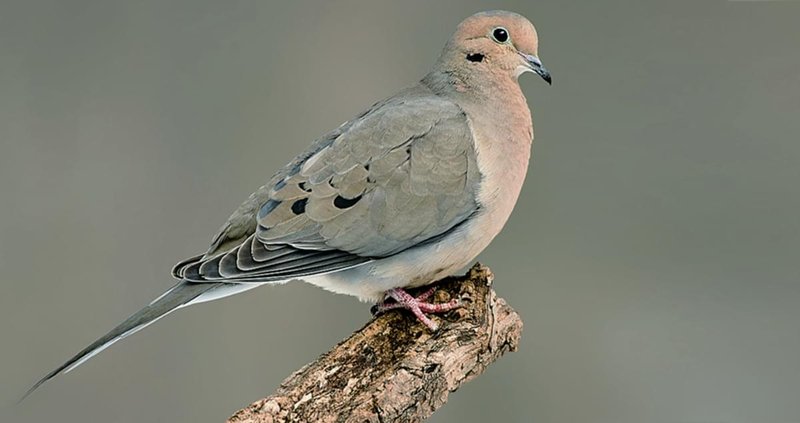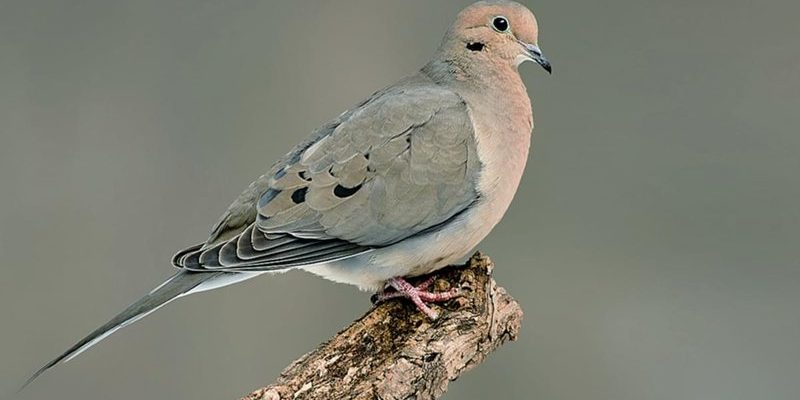
The mourning dove, known scientifically as *Zenaida macroura*, is a fascinating creature with a backstory that stretches back millions of years. If you’ve ever spotted their graceful presence in parks or perched on power lines, you may have wondered how they came to be so widespread and beloved. Much like a classic novel filled with twists and turns, their journey reflects changes in the environment, human influence, and even cultural symbols.
Let’s take a closer look at the history and evolution of the mourning dove, unraveling its journey from ancient times to its current status as one of North America’s most popular birds.
Origin and Ancestry of Mourning Doves
The story of the mourning dove begins far back in the Pleistocene Epoch, about 2.6 million years ago. During this time, the planet underwent dramatic climatic changes, shaping the habitats where these doves would flourish. The mourning dove is part of the Columbidae family, which includes all doves and pigeons. This family has a complex evolutionary history, with fossil records tracing back to the late Eocene period, around 50 million years ago.
You might be wondering why the mourning dove has such a somber name. The term “mourning” comes from the soft, plaintive cooing sound they make, which many people associate with melancholy. This bird has had to adapt to many environmental shifts, developing traits that allow it to thrive in diverse habitats like forests, urban areas, and open fields.
Interestingly, the mourning dove is closely related to the rock pigeon, which is often seen in urban settings. They share common ancestors and have similar features, yet the mourning dove has adapted to be more versatile, allowing it to inhabit a wider range of environments. This adaptability speaks volumes about their evolutionary success.
Mourning Dove Populations: Historical Trends
As we move through history, the mourning dove’s population has seen significant fluctuations. In the early 20th century, these birds faced challenges due to habitat destruction and hunting. A major turning point occurred with the Migratory Bird Treaty Act of 1918, which provided protections that allowed mourning dove populations to stabilize and even rebound.
This act was crucial not just for mourning doves but for many migratory species. It’s incredible to think that legislation could impact the survival of an entire species. By the 1940s and 1950s, mourning doves had made a remarkable recovery, thanks to conservation efforts and changing attitudes toward wildlife.
Today, mourning doves are one of the most abundant birds in North America, with populations estimated in the millions. They are adaptable feeders, thriving on seeds and grains, which has helped them maintain stable numbers despite changes in land use.
Cultural Significance of Mourning Doves
Beyond their ecological importance, mourning doves hold significant cultural and symbolic value. Their gentle cooing often symbolizes peace, love, and hope in various cultures. In many Native American traditions, the mourning dove is viewed as a messenger, bridging the earthly and spiritual realms.
Let me explain this further. When people hear the soft coo of a mourning dove, it evokes a sense of calm, often reminding them of home and connection. This emotional resonance is why many poets and writers have embraced the mourning dove in their works. You might find them representing comfort and solace, much needed in our fast-paced world.
Additionally, mourning doves often feature in art and folklore. In various cultures, they are connected to themes of love and fidelity, sometimes even appearing in wedding ceremonies as symbols of unity. This richness in meaning adds layers to their presence and deepens our appreciation for them as more than just birds we see in our backyards.
Adaptations That Encourage Survival
Mourning doves have developed several fascinating adaptations that enhance their survival. One of the most interesting is their ability to fly at impressive speeds—up to 55 miles per hour! This agility helps them escape predators and navigate through complex environments. You can often spot them making quick, aileron-like turns, which is pretty amazing to see.
Their diet is another key factor in their adaptability. Mourning doves primarily consume seeds from grasses and weeds, which are plentiful in various habitats. This flexibility allows them to thrive in different environments, from urban settings to rural farms.
But here’s the thing: while they can adapt to many challenges, mourning doves are still vulnerable to habitat loss. Urban development and agriculture can reduce their food supply and nesting areas, so it’s essential to support conservation efforts that protect their natural environments and promote biodiversity.
Breeding and Nesting Habits
When it comes to breeding, mourning doves are known for their relatively simple yet effective nesting habits. They typically build their nests in trees, shrubs, or even on building ledges, using twigs, grasses, and other plant materials. What’s charming is how both parents share the responsibility of raising their young.
You might be surprised to hear that mourning doves can breed multiple times in a single season. A female can lay two eggs every couple of weeks, with both parents participating in incubating the eggs. Once the chicks hatch, they’re dependent on their parents for a short period before they’re ready to fledge and explore the world on their own.
This nurturing behavior is crucial; it enhances the survival rate of their young. However, the struggle to find safe nesting sites in changing environments poses challenges. Urban areas may offer plenty of seeds but fewer natural spaces for nesting, highlighting the delicate balance mourning doves must navigate in our modern world.
Conservation Efforts and Future of Mourning Doves
As mourning doves continue to thrive across North America, conservation efforts are vital to assuring their future. Wildlife organizations and local communities are working hard to protect habitats and promote sustainable practices that benefit not only mourning doves but all wildlife.
You might wonder how you can contribute to these efforts. Simple actions—like planting native plants in your yard, creating bird-friendly spaces, or participating in local conservation programs—can make a real difference. Supporting policies that protect natural habitats is essential for the survival of mourning doves and countless other species.
It’s also important to raise awareness about the challenges they face. While mourning doves are currently abundant, habitat loss, climate change, and other threats could jeopardize their future if we don’t take action. Understanding their history and current challenges enhances our appreciation for these birds, reminding us of our role in their conservation.
The evolution and history of the mourning dove reveal a bird that’s more than just a common sight in our gardens. From its adaptive strategies to its deep cultural significance, the mourning dove tells a rich story of resilience and connection.
As we stroll through our neighborhoods and hear their gentle coos, let’s remember the journey they’ve taken. Each sound is a reminder of the beauty of nature, the importance of conservation, and our shared responsibility to protect these lovely creatures. By understanding the history of the mourning dove, we can learn to appreciate and advocate for the natural world around us, ensuring that future generations can enjoy the same comforting presence of these amazing birds.

